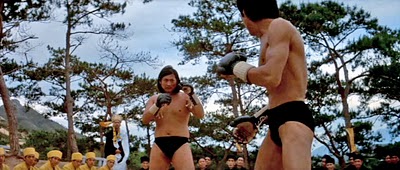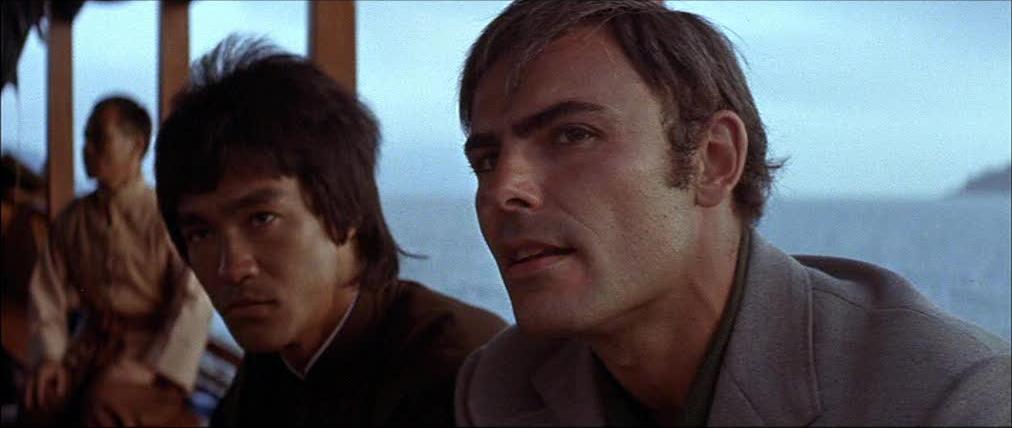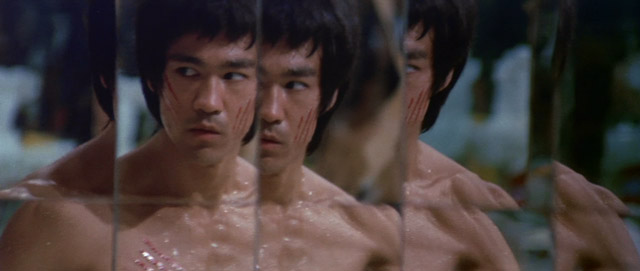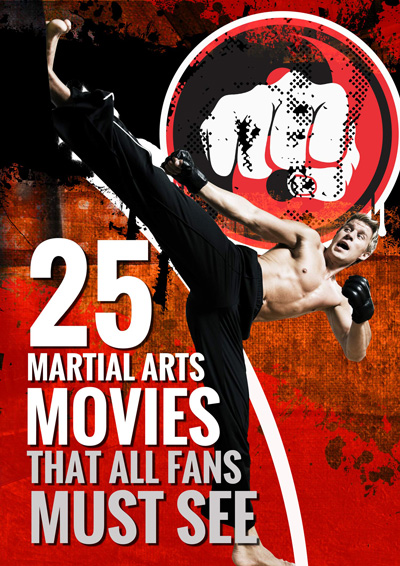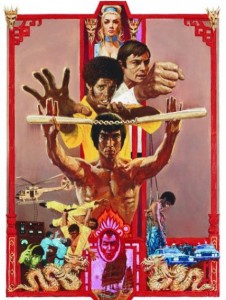 This movie is perhaps the most significant movie in the popularity of Martial Arts cinema (more on that here). Bruce Lee’s final (complete) film, which made him massively famous beyond belief, and made martial arts films (and practice) absolutely huge in the western world. So needless to say it has a reputation for being a good movie.
This movie is perhaps the most significant movie in the popularity of Martial Arts cinema (more on that here). Bruce Lee’s final (complete) film, which made him massively famous beyond belief, and made martial arts films (and practice) absolutely huge in the western world. So needless to say it has a reputation for being a good movie.
You’ve probably heard me say I’m Bruce Lee fanatic before, just like millions of other people across the world (not just his movies, his philosophy, martial arts and much more). But there’s always more to learn, but also messages to interpret or take in different ways. This is simply what I take from it.
So the movie begins…
…and you’re introduced to Bruce’s character Mr Lee, as he completely out classes another Martial Artist (Sammo Hung) in a sparring match. After this display of superior martial arts ability, he is approached by man named Mr Braithewaite.
Mr Braithewaite approaches Lee for a job, to help bring down an international criminal named Mr Han (Shih Kien), who owns an nearby island.
After discovering dead bodies of women who were last seen alive on Han’s Island, they request that Lee uses his invitation to Han’s Martial Arts tournament as cover to investigate and collect enough evidence to put Han away.
From there Lee agrees. He goes to island and gets down to business, fighting in the tournament whilst also secretly investigating (and of course fighting) behind the scenes.
Also entering are 2 Americans..
Mr Roper and Williams, two Vietnam vets who are highly trained martial artists, run into each other while heading over to the island.
However, these two guys come from two completely different places.
Williams (Jim Kelly) is an African American who practices at a karate school populated and run mostly by other African American martial artists. His back story shows us that his neighbourhood deals with a level of racial oppression.
When Williams is pulled up by a couple of Caucasian police men, they discover he’s going to Hong kong via Hawaii. Disgusted that a ‘Jig’ (as they called him) would be passing through Hawaii, they attempt to arrest him. Williams then stands up for his rights and fends off the policemen before snatching the cop car and heading off.
The other, Roper (John Saxon), is a Caucasian man who has a bit of gambling addiction. He’s heavily in debt to a criminal organisation and leaves the country to enter the Tournament.
Roper, Williams and Lee – a comment on Race
The idea of having a Caucasian, and African American and Chinese as the lead characters in a Hollywood film is something I feel Bruce included in Enter the Dragon for a reason.
As Bruce Lee was known for helping to bridge the gap between East and West, using these 3 culturally different characters together represents an equality amongst all races.
As Hollywood wasn’t known for having lead characters played by non-Caucasian actors, putting this trio together could have been an attempt to put this idea into the spot light a little more and help stop this racist way of thinking.
I find it interesting that Bruce originally intended for Roper to die and for Williams to survive to the end of the film, until John Saxon and his agent insisted that John’s character Roper live to the end of the film (can you say spoiled brat?). Whether it was intended to represent a message in the film or not.
The Martial Arts and Philosophy of the Movie
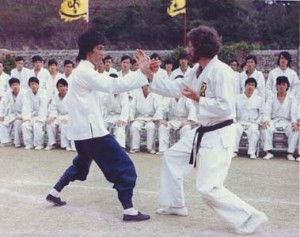 As you can expect from a Bruce Lee movie, the fights scenes are choreographed excellently with each fight being exciting and fast showcasing an astonishing level of mastery.
As you can expect from a Bruce Lee movie, the fights scenes are choreographed excellently with each fight being exciting and fast showcasing an astonishing level of mastery.
Throughout the movie each fight scene is different. In Bruce’s fights you see a lot of hand to hand combat, using a lot of stop-hits (or the way of the intercepting fist!), especially in the first fight against Sammo Hung. Further into the movie he expressed his Jeet Kune Do philosophies through action quite well. You’ll see biting, groin strikes, hair pulling, throat chops, everything outside of the traditional styles, mixed in with thew conventional moves (blocks kicks and punches).
This is also a movie which represent’s Bruce’s complete outlook on fighting. There are tournament fights as well as self defense, and one on one as well as multiple attack. One aspect people love to see these days thanks to the popularity of MMA is the groundwork. There’s a few Armbars thrown into the mix, and as I said earlier, it seems Bruce has already covered his take on the limits of practicing only one styles, even ahead of time as most BJJ (Brazilian Jiu Jitsu – Submission Wrestling) practitioners probably don’t prepare themselves for a biting opponent. Since BJJ wasn’t really mainstream until the 90’s (thanks to the UFC).
The Concept of no limitation, not following tradition like the martial arts crowd of the time is subtly promoted in the film. When in the film, Mr Lee is asked why he did not wear his uniform, he deliberately chose not to as a way of separating himself from the crowd of followers and symbolising him taking his own path, as he showcases many other times in the film. You’ll notice in a few scenes that Bruce walks in a different direction to the crowd (after his fight with O’Hara, the crowd runs across the screen as Bruce walks in a 90 degree angle, in another direction). These are all small expressions of the uniqueness of being yourself, and not being trapped within the crowd or ‘tradition’.
The Spoken Philosophy
The spoken philosophy is quite flexible, and can be interpreted in a number of ways. But the way I process Bruce’s message may be different to yours, but it speaks to me in a certain way.
The first philosophy, perhaps the most important for anyone training martial arts is the avoidance of conflict. As a survival mechanism, avoiding or neutralizing a fight is a better path than violence, as apparent in Bruce’s style in the film being referred to as ‘the art of fighting without fighting’. He uses a little deception to neutralize the fight before it had a chance to begin, physically separating himself from his opponent (stranding him on a boat). This approach made it impossible to be physically harmed, and is a concept many can learn from.
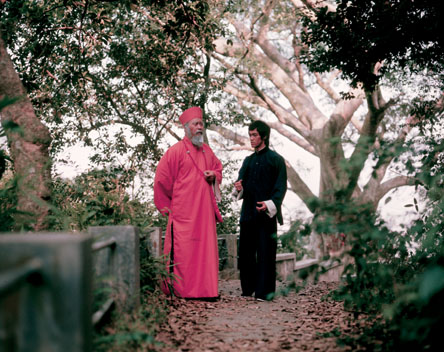
As conflict cannot always be avoided, Bruce also speaks about the frame of mind a martial artist should be in when fighting, clearly prevalent in the quote below:
Shaolin Abbott: I see your talents have gone beyond the mere physical level. Your skills are now at the point of spiritual insight. I have several questions. What is the highest technique you hope to achieve ?
Lee: To have no technique.
Shaolin Abbott: Very good. What are your thoughts when facing an opponent ?
Lee: There is no opponent.
Shaolin Abbott: And why is that ?
Lee: Because the word “I” does not exist.
Shaolin Abbott: So, continue…
Lee: A good fight should be like a small play, but played seriously. A good martial artist does not become tense, but ready. Not thinking, yet not dreaming. Ready for whatever may come. When the opponent expands, I contract. When he contracts, I expand. And when there is an opportunity, I do not hit. It hits all by itself.
(copied from IMDb.com)
I take this to be a comment on training, consistently perfecting your technique so that it becomes instinct. Thinking or even obsessing over conflict in your mind, processing each possible outcome and event and rehearsing a different fight in your mind . Imagining you are fighting, and practicing your moves like shadow boxing is about training your responses and thought patterns. All of this is done so you don’t have to think consciously in conflict, but react unconsciously. Freeing up your conscious mind and focusing on your opponent as your body takes care of itself is a big advantage. As Lee says: ‘The word ‘I’, does not exist‘ and ‘when the times comes, I do not hit. It hits all by itself’.
This, in my mind, opens up for the mirror fight scene perfectly. A mirror is symbolic of oneself, as Lee must look past himself, and the ‘illusion’ which the enemy hides his true motives. Once Lee remembers this quote, he smashes the mirrors, destroying the illusion of self (symbolically), and is able to more easily focus on, and defeat his opponent.
A Multi-level film
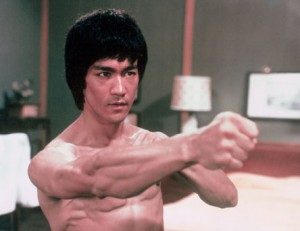 Enter the Dragon is a film that is fantastic on so many levels. It’s full of action for the fans who just want to sit and enjoy, it’s deep and thought provoking to those who want to further understand the art and philosophy behind it, and take their own personal version of the film in when they watch.
Enter the Dragon is a film that is fantastic on so many levels. It’s full of action for the fans who just want to sit and enjoy, it’s deep and thought provoking to those who want to further understand the art and philosophy behind it, and take their own personal version of the film in when they watch.
I encourage you to, if you have seen this movie, give me your thoughts on what you take from this movie either in the comments below or on our Facebook page. If you haven’t seen the movie then I highly recommend it, and believe it to be one of the very best of all time, both in terms of action, acting, and philosophy.
On Blu-Ray
Region A (US & Canada)
Enter the Dragon (40th Anniversary Edition) [Blu-ray]![]()
Region B (UK, Australia, New Zealand, Europe, etc)
Enter The Dragon – 40th Anniversary Edition [Blu-ray + UV Copy]![]()
On DVD –
Region 1 (US & Canada)
Enter the Dragon: 25th Anniversary Edition![]()
Region 2 (UK, Europe, etc)
Enter The Dragon on DVD![]()
Region 4 (Australia, New Zealand, etc)
Enter the Dragon DVD
Or Watch it Online Here![]() (US and Canada)
(US and Canada)

